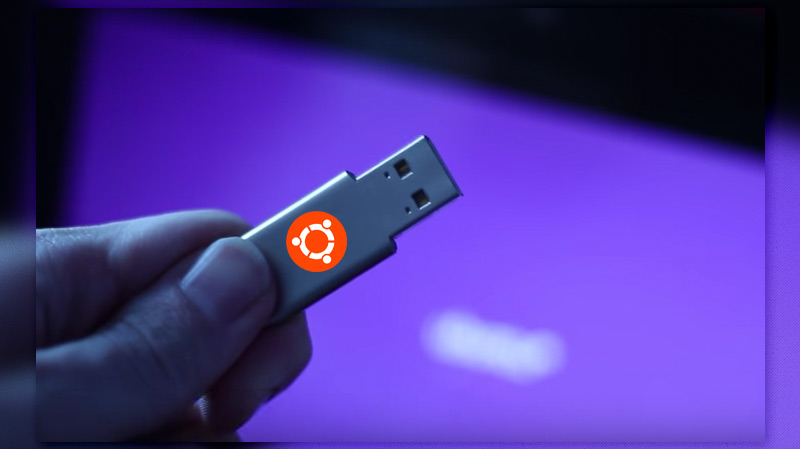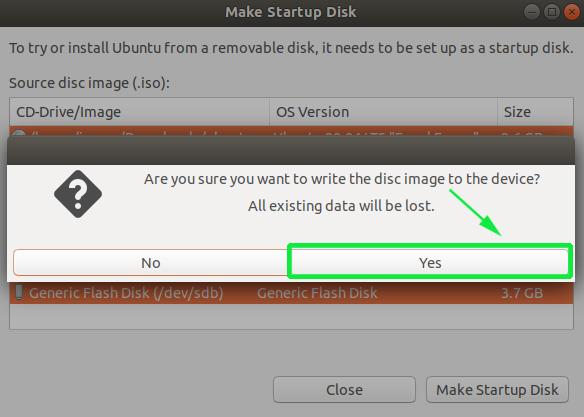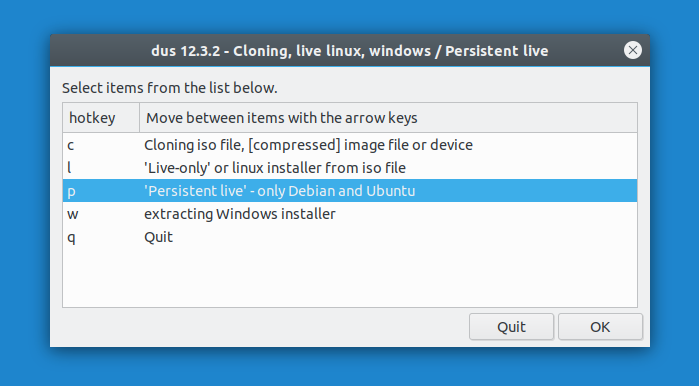

- Creating a usb boot disk for ubuntu for mac how to#
- Creating a usb boot disk for ubuntu for mac mac os#
- Creating a usb boot disk for ubuntu for mac install#
- Creating a usb boot disk for ubuntu for mac password#
And it works on old systems, minimum system required Windows XP, Mac OS 10.13. It small in package size with less than 200 KB. USBimager is a free and open-source tool with really simple interface.

That’s it.Ĭreate Bootable USB from Other Linux, Windows, Mac OS.įor all other systems I’d recommend USBimager if no system built-in tool available, though there are many other USB creating tools in the web. When done, it should prompt you installation complete.
Creating a usb boot disk for ubuntu for mac password#
Plug-in USB stick and it will auto-detect it.įinally click on “ Make Startup Disk“, click OK to confirm and type your user password to get start. This will take you to the Startup Disk Manager, where you should be able to see the USB drive. To boot from the disk, you need to hold down the option key when you hear the boot chime. Now remove the USB drive and insert it into the Mac computer. When the tool opens, click on “ Other …” and select the Ubuntu ISO image. Part 4: Boot Mac from macOS USB Drive for Installation. Other Ubuntu based systems can get it by installing the usb-creator-gtk package. If you’re now working on Ubuntu, that’s great, simply search for and launch Startup Disk Creator. And backup your data before getting started.Īlso a PC, Laptop / Notebook, or even Raspberry Pi running Linux, Windows, or Mac OS.Īnd download Ubuntu ISO image from either or /download Create Bootable USB from Ubuntu: If you need bootable USB with other data transfer usage unaffected, try it! Requirements:įirstly you need an USB stick with at least 4 GB storage.
Creating a usb boot disk for ubuntu for mac install#
Though I prefer the style of Ventoy, it however does not install in my USB stick for unknown reason. So here I’m going to introduce you few other USB writing tools. However, the USB drive does not boot after writing with recent Ubuntu ISO images. I used to use UNetbootin to create bootable Live USB.
Creating a usb boot disk for ubuntu for mac how to#
You can now quit Terminal and eject the volume.Want to create a bootable live-USB for installing Ubuntu on your machine? Well, here’s how to do it in Windows, Linux, or Mac OS. After everything, when you reboot, hold down the Option key and in addition to the standard choices, you should see an EFI Boot choice, which if selected, should chainload to a GRUB menu from the GRUB installed at the Ubuntu Boot Partition, from where you can chainload to the Ubuntu installation.


Sudo /Applications/Install\ macOS\ High\ Sierra.app/Contents/Resources/createinstallmedia -volume /Volumes/ MyVolume Sudo /Applications/Install\ macOS\ Mojave.app/Contents/Resources/createinstallmedia -volume /Volumes/ MyVolume Sudo /Applications/Install\ macOS\ Catalina.app/Contents/Resources/createinstallmedia -volume /Volumes/ MyVolume Sudo /Applications/Install\ macOS\ Big\ Sur.app/Contents/Resources/createinstallmedia -volume /Volumes/ MyVolume If it has a different name, replace MyVolume in these commands with the name of your volume. These assume that the installer is in your Applications folder, and MyVolume is the name of the USB flash drive or other volume you're using.


 0 kommentar(er)
0 kommentar(er)
